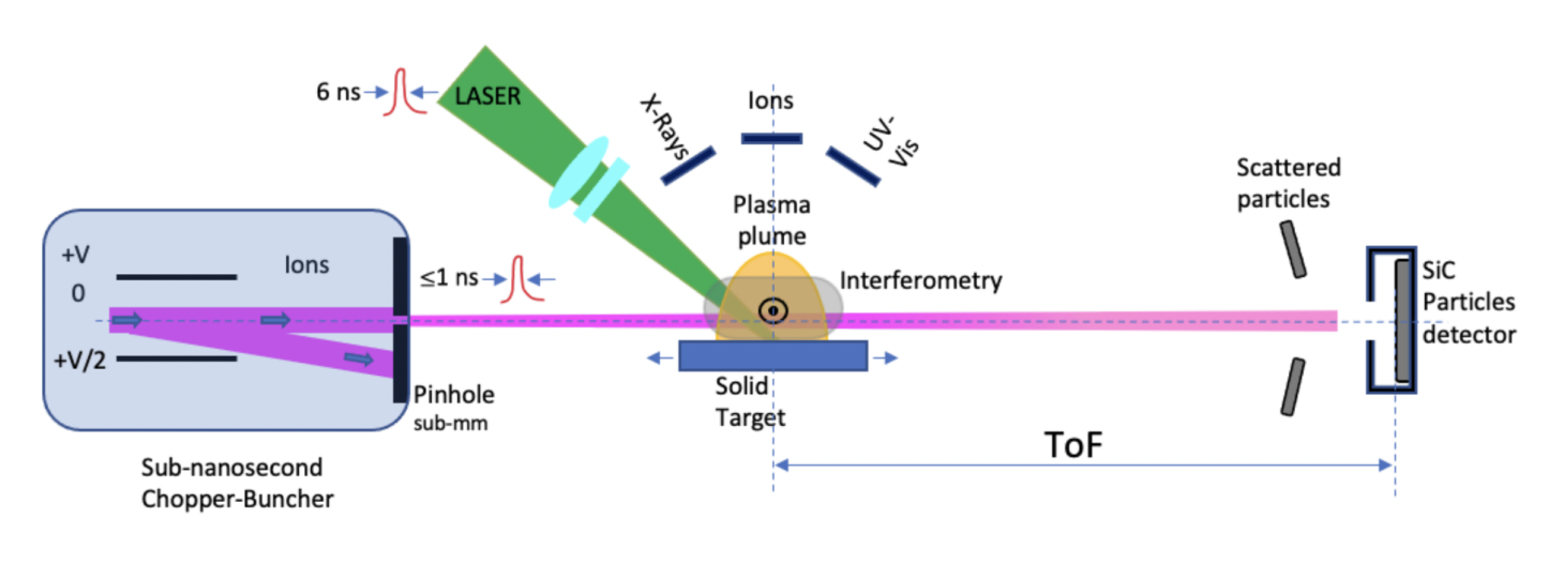FUSION
(2023-2025)
Local Coordinator: This email address is being protected from spambots. You need JavaScript enabled to view it.
The main aim of FUSION is the study of p-11B reaction in laser generated plasmas in order to investigate its possible applications for energy production (in nuclear fusion power plants) and future table-top sources to be used in medical and multidisciplinary applications.
Catania Group is mainly involved in the activity of WP2 (Ions energy loss and Stopping Power in Plasmas) and WP3 (Development and characterization of new targets).
The main goal of WP2 is a systematic measure of the stopping power of protons and alpha particles, in the low energy region, where ions speed approaches the thermal velocity of plasma electrons. In this region data reported in literature are few and in scarce accordance with existing calculation models.
This will be done by studying the interaction of protons and alphas by conventional accelerators in a Borated expanding plasma.
The plasma will be generated under vacuum, in the interaction point between a solid target and a ns laser beam. After the initial expansion, the plasma plume will be characterised by interferometric techniques while, simultaneously, conventional synchronised and bunched proton or alpha microbeams will cross this plasma in the intersection point with the interferometer axis (see figure below).

The energy loss of the traversing ions will be measured with a single event modality as a function of the plasma characteristics (temperature, density, etc.) by TOF measurement through SiC detectors already developed in the framework of the project SiCILIA (Silicon Carbide Detectors for Intense Luminosity Investigations and Applications). Alpha and proton beams will be provided by the ‘Singletron’ accelerators at the Physics Department of Catania University. In order to obtain a pulsed beam (bunch FWHM<1ns) we are developing a chopper-buncher system based on fast electrostatic deflection of the beam across an adjustable system of slits.
In the framework of WP3, the wide experience of Catania group on innovative nanoscaled materials will be used for the target realization and characterisation by exploiting material science methods to produce films enriched with B and H to be deposited onto Si substrates. In particular, once established the laser facility to be used, the thickness of B:H film will be improved (from 5-10 µm to 1 mm), and consequently the synthesis method will be properly adapted. The target containing hydrogen and boron will be prepared by mechanochemical syntheses of polymer-boron and polymer-decaborane mixtures. A reference sample without any B will also be realized. Different ratio of B and polymer will be attempted, as below reported, in order to find the optimum ratio for the p-B11 reaction investigation. The mixtures will be prepared by mixing, on the nanoscale, a curable thermosetting polymer and elemental boron or decaborane (B10H14) powders. The powders will be reduced at the nanoscale size by ball milling technique. These powders will then be pilled to form pills 1 mm thick and approximately 10 mm in diameter. Finally, the pills will be polymerized in an oven at a temperature of 150°C with the aid of a catalyst, such as benzoyl peroxide, present in the mixture. The pills will be prepared with different compositions by varying the weight ratio between polymer and boron or decaborane.
NATIONAL FUSION WEB SITE












 Subscribe to RSS Feed
Subscribe to RSS Feed